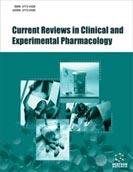Abstract
Aim: Various research was conducted during the last decade, with inconsistent findings regarding iron death anaemia (IDA) perils vis-à-vis utilization of proton-pump inhibitors (PPIs). Consequently, recent systematic review and meta-analysis were implemented to evaluate IDA-related perils concerning the utilization of proton-pump inhibitors.
Methods: The databases of EBSCOhost, PubMed® and Cochrane Central were searched from the research outset until February 28, 2021 purposely to identify all research with objectives that align with the present research investigation. The Newcastle-Ottawa Scale (NOS) was utilized for the evaluation of the research investigation standard. The prime (1º) goal of the research was to gauge IDA peril among users of proton-pump inhibitors (PPI). For data processing, RevMan (Review Manager) version 5.4 was employed.
Results: In total, fourteen investigations research was employed in this systematic review and metaanalysis. The combined relative risk of nine research exhibited a numerically consequential interrelation betwixt the utilization of proton-pump inhibitors and IDA peril (RR 2.56 [95% CI 1.43–4.61], p < 0.00001). Contemporary systematic review and meta-analysis examination posit that proton-pump inhibitor consumers are prone to greater peril of coming down with IDA in comparison to non-PPI users.
Conclusion: In keeping with the findings of my research, prescriber physicians should exercise caution when prescribing PPIs to individuals taking it for a long time to avoid the peril of IDA. Additionally, their serum iron level should be checked to ensure that proton-pump inhibitors are safe.
Keywords: Iron deficiency anaemia, proton pump inhibitors, systematic review, meta-analysis, serum iron, risk.
Graphical Abstract
[http://dx.doi.org/10.1053/j.gastro.2008.12.015] [PMID: 19124023]
[http://dx.doi.org/10.1053/j.gastro.2008.08.045]
[http://dx.doi.org/10.1111/j.1572-0241.2008.02200.x] [PMID: 18853980]
[http://dx.doi.org/10.1111/ijcp.12611] [PMID: 25652848]
[http://dx.doi.org/10.1053/j.gastro.2017.01.031] [PMID: 28257716]
[http://dx.doi.org/10.1038/ajg.2009.115] [PMID: 19240698]
[http://dx.doi.org/10.14740/jocmr3906] [PMID: 31523334]
[http://dx.doi.org/10.4212/cjhp.v71i4.2828] [PMID: 30186000]
[http://dx.doi.org/10.1007/s10620-015-3642-8] [PMID: 25840918]
[http://dx.doi.org/10.1111/jphs.12369]
[http://dx.doi.org/10.1046/j.1365-2036.2003.01600.x] [PMID: 12823152]
[http://dx.doi.org/10.1111/j.1742-1241.2004.00298.x] [PMID: 15707461]
[http://dx.doi.org/10.1136/bmj.39406.449456.BE] [PMID: 18174564]
[http://dx.doi.org/10.2169/internalmedicine.9554-17]
[http://dx.doi.org/10.1136/bmj.e372] [PMID: 22294756]
[http://dx.doi.org/10.1002/jha2.96]
[http://dx.doi.org/10.3390/jcm8091382] [PMID: 31484461]
[http://dx.doi.org/10.20452/pamw.15101] [PMID: 31825323]
[http://dx.doi.org/10.1007/s10620-011-1589-y] [PMID: 21318590]
[http://dx.doi.org/10.1111/joim.12826] [PMID: 30141278]
[http://dx.doi.org/10.1016/j.soard.2019.06.019] [PMID: 31422079]
[http://dx.doi.org/10.3889/oamjms.2018.142]
[http://dx.doi.org/10.1053/j.gastro.2016.11.023] [PMID: 27890768]
[http://dx.doi.org/10.1080/08880018.2016.1247392] [PMID: 27960647]
[http://dx.doi.org/10.1253/circj.CJ-14-0582] [PMID: 25392070]
[http://dx.doi.org/10.1111/apt.13194] [PMID: 25858519]
[http://dx.doi.org/10.1097/MJT.0b013e3181f9f6d2] [PMID: 21150767]
[http://dx.doi.org/10.1136/gut.2006.108613] [PMID: 17344278]
[http://dx.doi.org/10.7326/0003-4819-151-4-200908180-00135] [PMID: 19622511]
[http://dx.doi.org/10.1001/jama.283.15.2008]
[http://dx.doi.org/10.7326/M13-2886]
[http://dx.doi.org/10.1007/s12350-015-0249-6] [PMID: 26245193]
[http://dx.doi.org/10.1136/bmj.315.7109.629] [PMID: 9310563]
[http://dx.doi.org/10.1097/01.SMJ.0000110405.63179.69] [PMID: 15455980]
[http://dx.doi.org/10.1046/j.1365-2036.1998.00274.x] [PMID: 9692706]





























